Lungwort: Effect, Types & Planting
Lungwort is known for its medicinal properties. We will introduce you to the different types of spotted to real lungwort and show you how to plant and care for them in the garden.
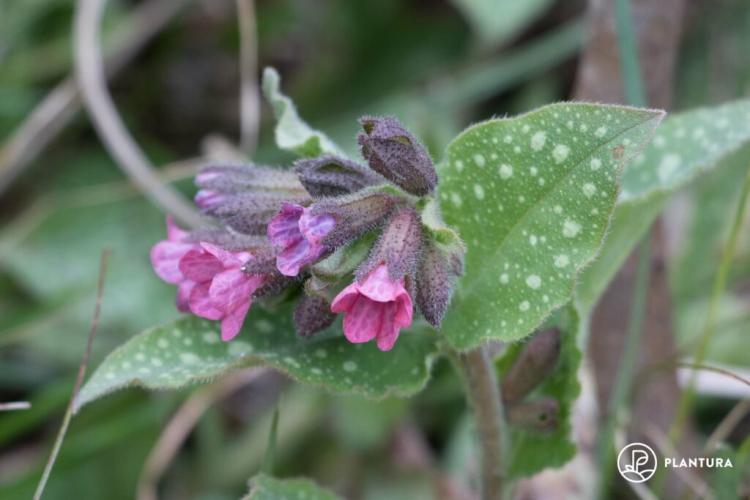
Lungwort is a nice addition to any garden
With its delicate growth and colorful flowers, the common or spotted lungwort ( Pulmonaria officinalis ) is one of the plants that should not be missing in any garden. Not only because of its decorative appearance, the herb is also extremely popular with gardeners. Above all, the easy-care species and shade tolerance make the plant a valuable garden dweller. At the same time, the lungwort is said to have a healing effect. It has been used in folk medicine against all kinds of lung ailments since the 15th century. We’ll tell you here what the healing properties of lungwort are and how you can grow the plant in your own garden.
Lungwort: flowering time, origin and properties
Table of Contents
The lungwort is a real eye-catcher with its lovely appearance in every garden. The perennial belongs to the predatory family (Boraginaceae) which also includes borage ( Borago ) or comfrey ( Symphytum ). In addition to the real lungwort, the genus of the lung herbs ( Pulmonaria ) includes other species, most of which are native to Europe. The creeping perennials only reach an average height of 20 to 30 centimeters and thus belong to the dwarfs in the bed. But their low height makes the lungwort no less attractive: Between March and May the plants have funnel-shaped flowers that shine in red, blue and purple tones (rarely also in white). Some types of lungwort even change their flower color within one flowering period. Its leaf decoration is no less attractive, because it has – depending on the variety – a green, white speckled or silver-gray color. The stems and leaves of the plant are mostly softly hairy.

Lungwort impresses with its colorful flowers
The name of the lungwort is derived in German and Latin from the word “lung” (Latin “pulmo”). The reason for this unusual naming is the leaves of the plant, which are supposed to be reminiscent of lungs. The plant has therefore also been used to treat lung diseases since the Middle Ages, even if its use is controversial today.
Lung Herbs: The Different Types
There are around 14 to 20 different types of lung herbs, including wild plants and various wild species. Among the best known is the real or spotted lungwort, which was traded as a medicinal plant for a long time. But other species are also attracting increasing attention in horticulture. We have summarized the most common types of lungwort and their characteristics for you here.
Real or spotted lungwort ( Pulmonaria officinalis )
- 30 to 40 cm in height
- Pink-red to violet-blue flowers from March to May
- Egg-shaped leaves with round, silvery-white spots
- Known as a medicinal herb against coughs and inflammation
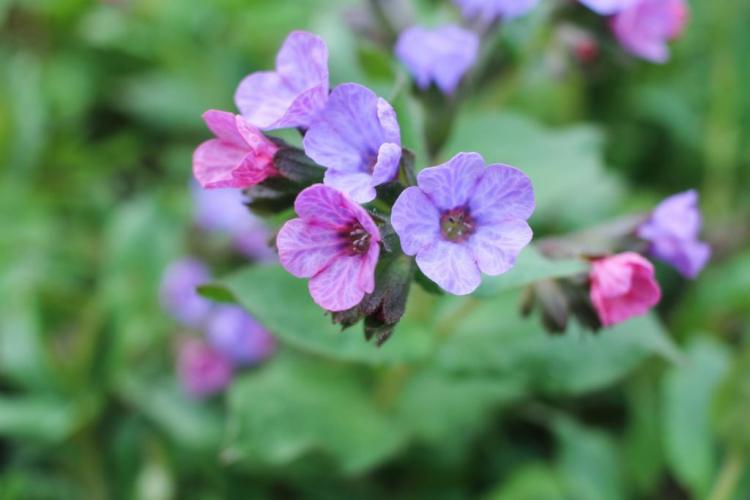
The spotted lungwort is a well-known medicinal plant [Photo: Sashko Tkachenko / Shutterstock.com]
Red lungwort ( Pulmonaria rubra )
- 20 – 30 cm height
- Matt red flowers from April to May
- Leaves lanceolate and green
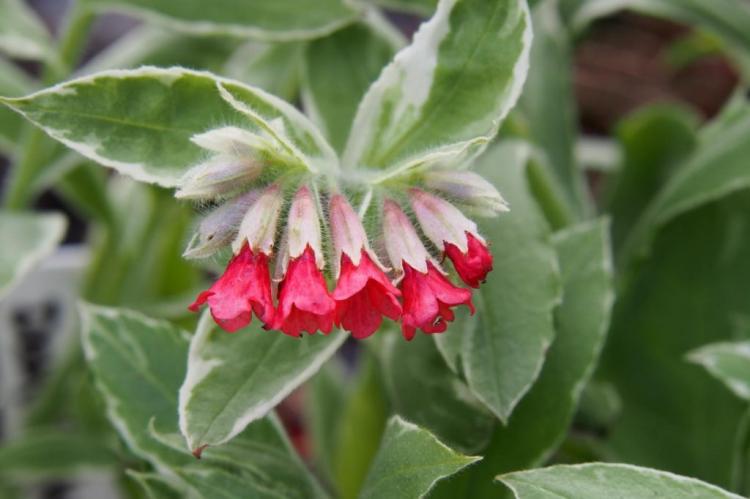
The red lungwort impresses with its dull red flowers [Photo: Anna Gratys / Shutterstock.com]
Narrow-leaved lungwort ( Pulmonaria angustifolia ‘Azurea’)
- 15 – 20 cm height
- Gentian blue flowers from March to April
- Lanceolate, unpatterned leaves
Great spotted lungwort ( Pulmonaria saccharata ‘Mrs. Moon’)
- 25 – 30 cm height
- Pink-red flowers that turn purple over time
- Silvery-spotted, lanceolate foliage
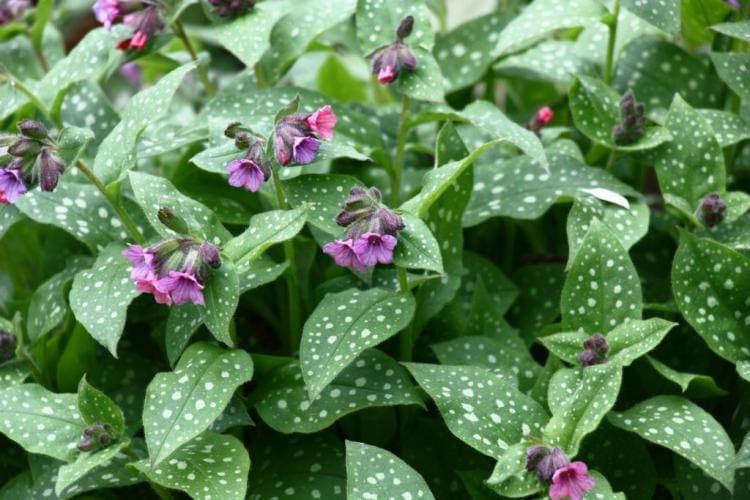
The great spotted lungwort ‘Mrs. Moon ‘impresses with its attractive leaf color [Photo: imamchits / Shutterstock.com]
In addition to the lungwort species mentioned, there are also numerous wild forms such as the soft lungwort ( Pulmonaria mollis ) or the tuberous lungwort ( Pulmonaria montana ), which are often endangered and therefore under special protection. In no case should the lung herbs native to us be confused with the Indian lungwort ( Justicia adhatoda ) – this is not related to the native varieties and belongs to the acanthus family (Acanthaceae).
Plant lungwort: Everything about the location and time
The pretty lungwort is particularly easy to care for and robust. However, the plant can only show these properties if it is planted in a suitable location: A place under deciduous shrubs or trees in particular has proven itself. Here the lungwort gets enough light to match the shoot in spring, at the same time it is perfect for underplanting because of its small size. Many types of lungwort are also suitable for the shade, but here the flowers are often leaner. Lungwort is also very frugal in the soil. However, a location with nutrient-rich, humus-rich and sun-warm soil is ideal. This should have a good water storage capacity, as the lungwort is sensitive to drought. At the same time, waterlogging should definitely be avoided.
If you want to plant lungwort, there are two options: Plants that have been moved forward can be planted almost all year round, but the best time to plant them is in April or May. In order to create suitable site conditions for the plants, it is advisable to improve the soil with compost before planting. The individual plants are placed in the ground about 15 centimeters apart and watered well. If you prefer to sow the lungwort, March is ideal. Since lung herbs are light germs, the plant needs light to germinate. For this reason, the seeds should not be stuck deeper than half a centimeter into the ground. After sowing the lungwort, it is crucial to keep the soil sufficiently moist for the next two to four weeks.
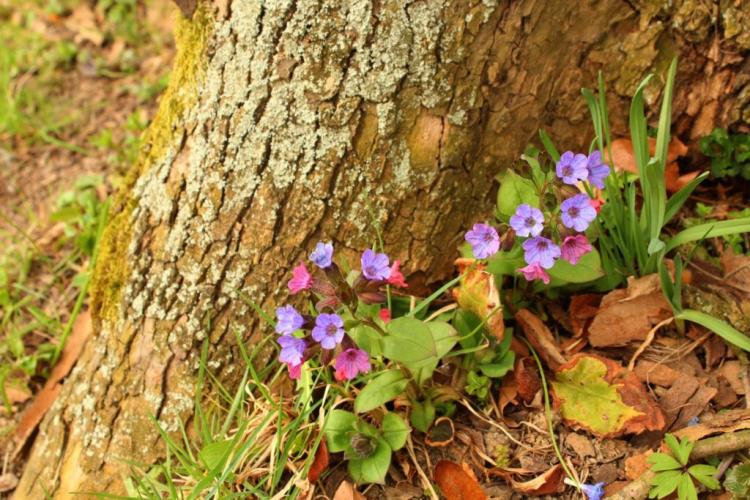
Lungwort feels particularly comfortable under deciduous trees [Photo: Hana Stepanikova / Shutterstock.com]
Propagate lungwort
The propagation of the perennial is just as easy to care for as the lungwort is in the garden. The lungwort can be propagated particularly easily by dividing the perennial. The best time to do this is right after flowering in early summer. A healthy, strong mother plant is chosen to divide the lungwort. The plant can be divided into several parts directly in the bed or on a stable surface with a spade or a clean, sharp knife. Each section should have at least two shoots (at best more) in order to develop into a new plant. The removed parts are then replanted at a distance of at least 15 centimeters from the neighbors.
Another possibility is the extraction and sowing of lungwort seeds. However, this method is not recommended, as the lung herbs easily cross with each other and so plants with the characteristics of the mother plant rarely emerge.
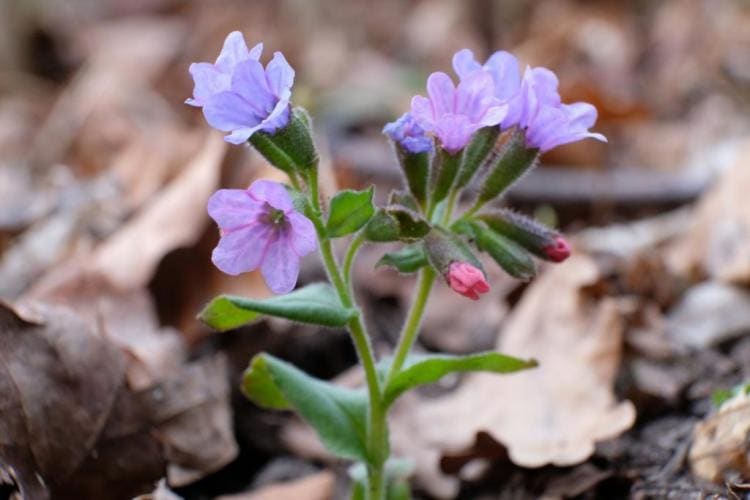
Lungwort can be easily propagated [Photo: iwciagr / Shutterstock.com]
Maintain and cut lungwort
Even if the lung herbs are considered to be particularly easy to care for, they should receive a little attention every now and then. The plant prefers a moderately moist soil, but does not tolerate waterlogging. Regular watering in dry summers is therefore recommended on well-drained, sandy soils. In addition, lung herbs are happy to be fertilized once a year. This should be done in the spring before flowering with a primarily organic fertilizer such as our Plantura organic universal fertilizer. The forest plants are also very grateful for gifts of leaf humus, nettle manure and, above all, bark mulch.
Although a cut is not strictly necessary, it is recommended that the lungwort be cut annually. The plants are completely cut back after the flowering period, around May. This stimulates a new shoot, whereby the new leaves develop a particularly beautiful pattern. In addition, the hardy lungwort does not retreat as quickly after being cut in autumn. The plant should not be cut back only if seed formation is desired, for example for the production of new seeds.
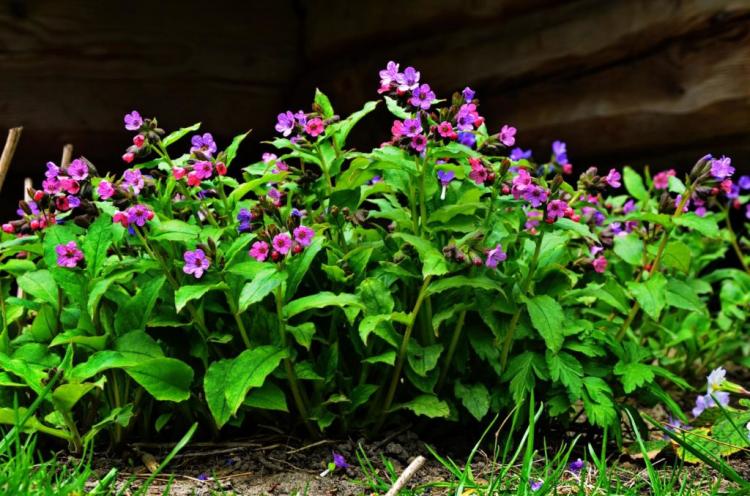
Lungwort is particularly easy to care for [Photo: weha / Shutterstock.com]
Lungwort: use as a medicinal plant
For a long time, the real or spotted lungwort was considered a tried and tested home remedy for coughs and other lung diseases. Hildegard von Bingen already used a lungwort drink for respiratory problems, congestion in the lungs or pulmonary edema. Today, however, the healing power of the plant is viewed rather critically: The spotted lungwort received a negative farewell from Commission E, a department of the former Federal Health Office, because its effectiveness could not be confirmed. For this reason, lungwort is rarely found in conventional medicine and is rarely used as a minor ingredient in teas.

Lungwort is still used today as an ingredient in tea [Photo: Madeleine Steinbach / Shutterstock.com]
In homeopathy and folk medicine, however, the spotted lungwort is still used. Lung herb tea and tinctures are said to alleviate symptoms of the respiratory tract, as well as the gastrointestinal tract and the lower urinary tract. In particular, the high content of mucus polysaccharides and tannins is said to have an expectorant and soothing effect. The effect of lungwort tea has not been proven, but there are also no known side effects.
Would you like to know more about the health benefits of herbs? In our special article “11 herbs that strengthen the immune system” we introduce more herbs.






